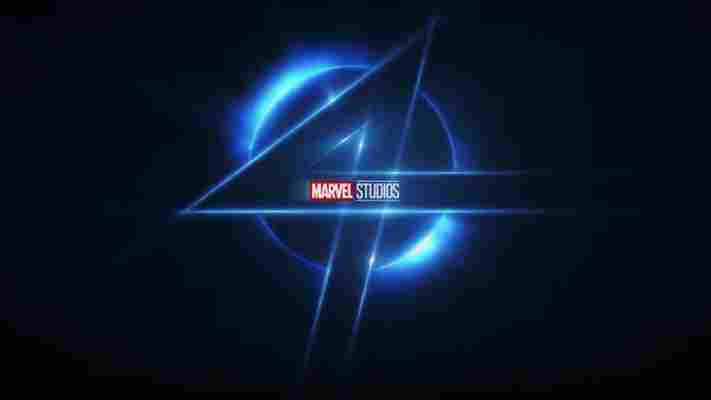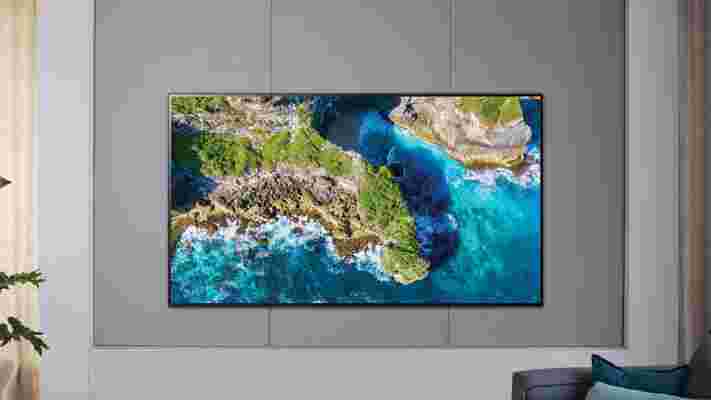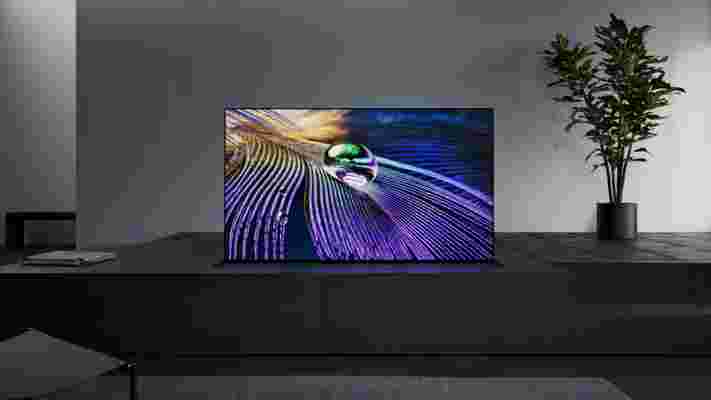Spider-Man: No Way Home director Jon Watts is bringing the Final Destination franchise back from the dead.
Multiple sources, including Variety and Deadline , have reported that Watts has been brought on board to produce the franchise's first movie since 2011's Final Destination 5.
The unnamed horror flick , which is being developed under the unsurprising working title Final Destination 6, will be released exclusively on HBO Max . Long time Final Destination producers Craig Perry and Sheila Hanahan Taylor will also produce the film, as will Watts' wife and producing partner Dianne McGunigle.
In a statement, Watts said: “Both Dianne and I have been massive fans of ‘Final Destination’ from the very beginning. So to be able to have a hand in crafting a new story with the original team and New Line is going to be both fun and exciting.”
The Final Destination film series was a theatrical staple of the early 2000s. Each instalment told the same story: a group of teens or young adults escape certain death after each movie's protagonist has a sudden premonition about their impending doom. Despite avoiding their foretold demises, though, the survivors are hunted and killed off by an unseen force – i a manifestation of Death itself – with their deaths usually the result of a bizarre accident.
While the Final Destination franchise consistently received mixed reviews from critics with every new release, the franchise is the eighth highest-grossing horror film series ever. Its total earnings at the global box office stand at $657 million but, given that the next instalment is set to land on HBO Max, that figure won't increase any time soon.
Analysis: how will Final Destination 6 affect Watts' Fantastic Four movie?

With Watts now attached to a non- Marvel movie project, some MCU fans may be wondering what the future holds for Marvel Studios' Fantastic Four movie.
As part of Marvel's Comic-Con panel in July 2019, president Kevin Feige revealed that, at long last, a Fantastic Four MCU movie was in the works. Some 18 months later, Watts – who has directed all three Spider-Man MCU flicks – was confirmed as the Fantastic Four film's director.
Since then, however, there have been no updates to about the upcoming Marvel Phase 4 movie. With Watts boarding the Final Destination series, does this mean that Marvel will have to find a new Fantastic Four director?
In short, no. Watts is only producing Final Destination 6 – although he also wrote the treatment to its script, according to The Hollywood Reporter . His work on New Line Cinema's horror movie, then, shouldn't have a major impact on any potential Fantastic Four work.
The Fantastic Four film doesn't have a release date yet, and no casting or screenwriter announcements have been made either. As such, it's likely that Fantastic Four is still rooted in the pre-production phase. If that's the case, Watts has an opening in his calendar to produce Final Destination 6 before he fully commits to directing Fantastic Four. So working on two projects simultaneously shouldn't be an issue anyway.
Regardless, Watts' star continues to rise in Hollywood circles. The Clown and Cop Car writer-director has overseen a hugely successful Spider-Man trilogy for Marvel and Sony Pictures, with No Way Home becoming the third highest-grossing MCU film of all-time. No Way Home has earned $1.54 billion at the global box office since its initial December 15 release in the UK – though it has some way to go if it hopes to surpass Avengers: Endgame's $2.8 billion and Avengers: Infinity War's $2.05 billion totals.
Overall, Watts' Spider-Man trilogy has grossed $3.55 billion. Of course, the likes of Marvel Studios' head Kevin Feige, Spider-Man star Tom Holland, and Sony Pictures producer Amy Pascal have also helped the webslinger's last three solo movies to accrue such a total. But there's no denying that Watts has also had a significant role to play in each film's success. It's unsurprising, then, why his position as Fantastic Four director won't be under threat despite being hired to revive the Final Destination franchise.
Why no Days Gone 2 for PS5? Sony decision still baffles game director
The director of Days Gone, Jeff Ross, says that, despite the game being a sales success, he and his team were made to feel that it was a disappointment.
He explains on Twitter that, by the time he left Sony, Days Gone had been out for just over a year and a half, and had managed to push more than eight million sales. Since then, it's sold a further million thanks to its release on PC via Steam.
"Local studio management always made us feel like it was a big disappointment," says Ross, while agreeing with a reply saying it's weird that Sony never agreed to a sequel .
Is Sony playing favorites?
Ross' comments come in response to the news that Ghost of Tsushima has now sold more than 8 million copies. Developer Sucker Punch Productions put out a celebratory Tweet , thanking players for their support.
It achieved this goal in roughly the same amount of time (maybe a bit less) than Days Gone did, yet Bend Studio were apparently given little cause to celebrate. Ross even adds that while Days Gone's sales weren't as strong as something like God of War, neither were Ghost of Tsushima's or Death Stranding 's, both of which Sony appears to have treated with more fondness.
Some suspect that Sony was more concerned with Days Gone's critical reception. While reviews were generally positive, it garnered a slightly mixed response from critics, with the PlayStation 4 version holding an average Metacritic score of 71. Ross clarifies that the grief he and the team received was over the game's sales , not review scores.
The canceled sequel

Last April, Bloomberg reported that Bend Studio pitched a Days Gone sequel to Sony, but was ultimately rejected due to the first game's reception and long development time.
Two teams were instead tasked with assisting Naughty Dog , one with a multiplayer project and another on an unannounced Uncharted game, but this prompted several staff members to leave as they didn't want to see Bend become a satellite studio.
The remaining staff asked to be taken off the Uncharted project, which Sony agreed to, leaving Bend to work on its own thing – apparently unrelated to Days Gone.
News of Sony rejecting a sequel did not sit well with fans, who put together a petition demanding the company to approve Days Gone 2. At the time of writing, it has reached over 140,000 signatures, although Sony has yet to issue any sort of response.
What is OLED? Black levels, burn-in, and the Nintendo Switch explained
OLED is a term that you'll see everywhere right now. Whether you've been hunting for a new TV, eyeing up the latest laptops or reading up about the latest Switch: the Nintendo Switch OLED . But what is OLED tech? And, importantly, do you need to upgrade to an OLED TV and an OLED laptop?
Let's begin with what OLED stands for and that's Organic Light Emitting Diode. That might not make much sense on its own, but this refers to the panel that's used inside an OLED TV – or any other kind of OLED screen. This panel is what displays the things you can see on the screen, so think colors, images and light, the things that make up your favourite movies, TV shows and games.
So it's the OLED panel makes OLED TVs stand out in comparison to other types of panels. You'll also find CRT (cathode ray tube), LED (light-emitting diode), LCD (liquid crystal display), or QLED (quantum dot).
The main difference is in the organic material that OLED TVs use, which is more expensive to produce. Importantly, it also won't last as long as other kinds of panel technology, but many argue that the benefits of OLED outweigh the expiration date. (Because in most cases, you'll still get years and years of use out of them.)
There are many benefits to OLED TVs. They bring you better image quality (think blacker blacks and brighter whites), faster response times and reduced power consumption. The super fast response times are good news if you’re on the hunt for a new gaming TV , especially one that does justice to the speed and performance of the next-gen PS5 and Xbox Series X .
So if you’re looking to buy one of the best TVs (or any other screen-based gadget), you need to learn more about OLED because you’ll probably want to consider an OLED version of whatever you're buying. If we're talking TVs specifically, only Samsung’s QLED TVs offer a rival to OLED. And although Micro LED is promising, it still has a way to go before it can compete.
This guide is an OLED TV explainer, helping you to figure out how OLED works, what sets an OLED TV apart from other types and, importantly, if this TV tech is right for you.
UPDATE: If you're interested in the latest and greatest new tech announcements, check out our best TVs from CES 2022 guide , where we'll be collecting together all of the most exciting TV updates and launches from the tech expo.
This all started a few years back when engineers at companies like Samsung and Sony introduced an array of LEDs as a backlight, which meant that if a certain part of the screen was black then those LEDs behind that portion could be turned off to make it appear blacker.
This is a better solution than a CCFL backlight, but it still has its problems. Since it's a light behind the LCD producing the illumination rather than the LCD layer itself, the illumination is not entirely in-sync with the pixel in front of it. The result is an effect called 'blooming', whereby LED light from bright portions of the image bleeds over into areas of blackness.
This is what separates OLEDs from LCD/LED displays. In an OLED TV display, the pixels themselves are the things producing the light, and so when they need to be black they are able to turn off completely, rather than relying on a backlight to turn off on their behalf.
What about the Nintendo Switch OLED?
Its OLED's self-emissive nature that helps in this regard, ensuring that 'off' pixels are actually off, creating a real black rather than a semi-convincing gray. This also means the level of contrast between bright and dark areas of the screen is massive, even 'infinite'.
It's telling that Nintendo has opted for OLED for a premium step-up model of its console, even increasing the size of the screen so that you can better appreciate the new Switch's self-emissive pixels.
Those pixels can also instantaneously switch between states, meaning that response times are very fast – ideal for responsive play, or for getting the edge in competitive gaming.
Read more: Nintendo Switch OLED release date, price, and specs


LG's rollable OLED – which unfurls out of a box, either on the floor or ceiling – has now released in South Korea, with a wider release seeming likely soon. New form factors like these, including even transparent panels , are forever in the works, though not all of these experimental ideas end up making it to market.
There are also prototype OLED TV designs out there that have thinner, scroll-like form factors , or can be installed at the foot of a bed .
Samsung is one of several TV makers looking to develop what's called QD-OLED : a new type of OLED panel that uses quantum dot emitters to improve brightness. The tech is very much in development, but when it arrives, it could meld the competing QLED and OLED technologies and render previous methods of production obsolete.
Many companies and researchers are also actively working to make OLED even better and brighter. OLED TVs are notorious for their dim output, but there's promising news from researchers at the University of Michigan.
A team has developed a new electrode that can 'liberate' 20% more light from respective screens at the same time as increasing energy efficiency and improving the battery life of OLED displays. Right now this only applies to portable displays – smartphones and the like – but it's a good step for TVs too.
Original reporting in this article was by Jamie Carter.